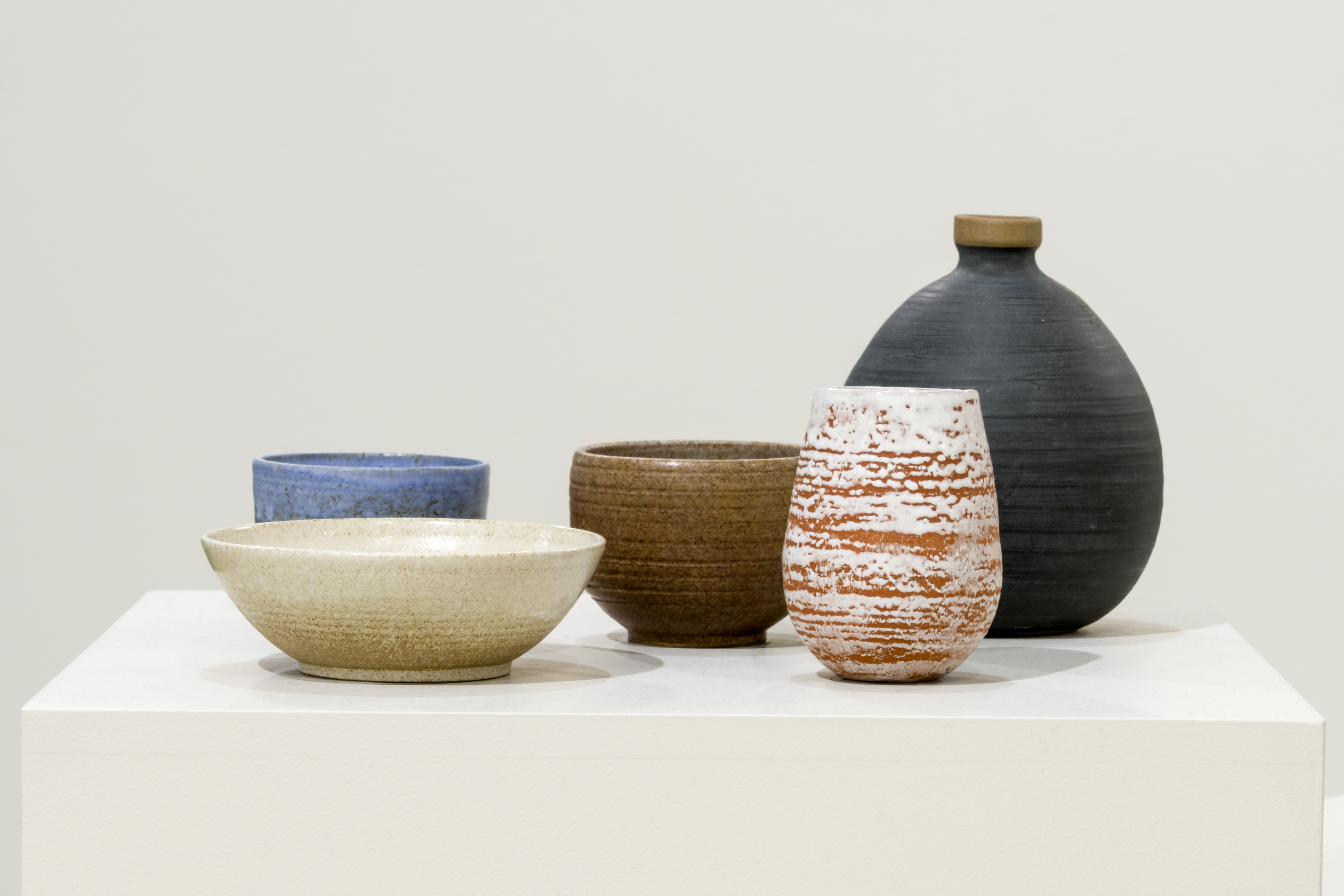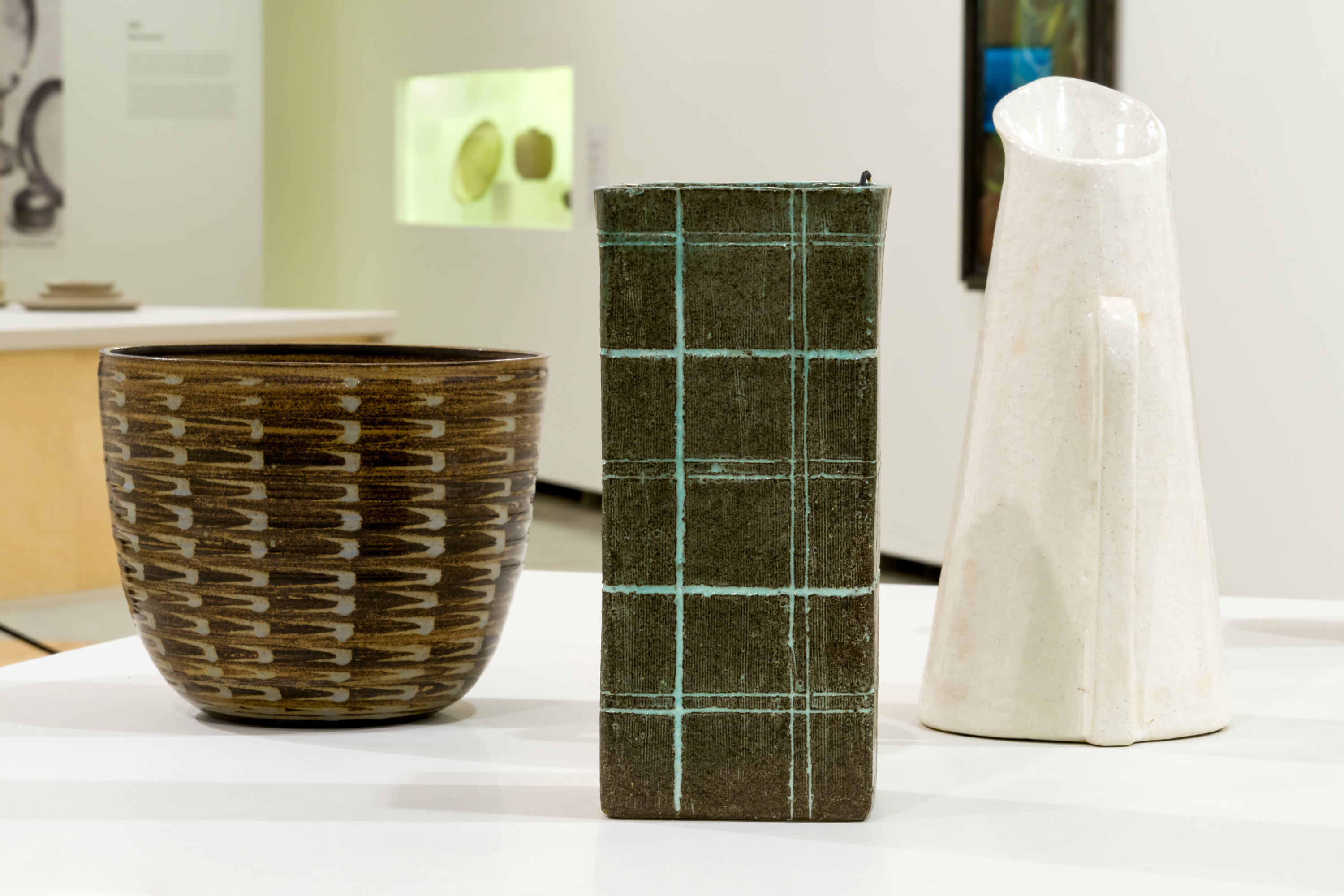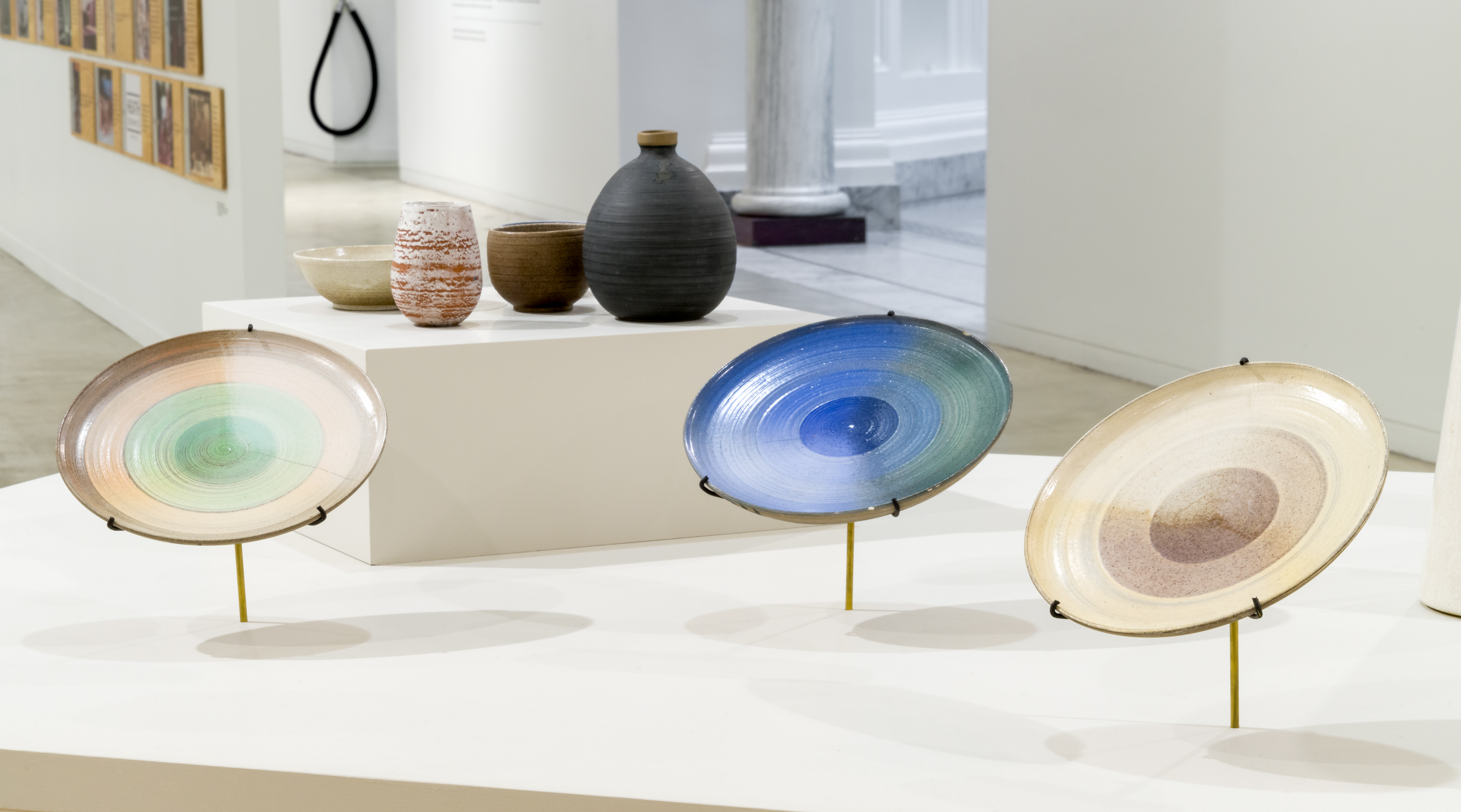Edith Heath’s affinity for and fascination with her surrounding landscape informed her art. In 1943, she and her husband Brian spent weekends driving around California looking for clay deposits. With many clay-mining operations closed during World War II, the couple found defunct clay pits and gathered materials. They collected brick clays from Niles Canyon in the San Francisco Bay Area; white clay from Tesla, California; talc from Southern California; and eventually high refractory fire clays, which are used primarily to produce fire brick, from Ione, in the foothills of the Sierra Nevada.
At the time, most clays used in dinnerware were processed to the point that they were white rather than the natural colour and texture of the state’s iron-rich clay. Heath rebelled against white clay—what she referred to as “gutless”—and instead embraced the inherent variation found in California clay.
Alongside her explorations in the natural environment, Heath enrolled in a ceramic chemistry class at the University of California Extension program and spent time in her kitchen studio testing the properties of various ceramic materials. Heath’s research on clay bodies led to pioneering changes in the ceramics industry. In choosing a less processed California fire clay for her clay body, she produced less material waste. Also, in her clay body she implemented a eutectic system—a process whereby a mixture of substances melts at a lower temperature than that of any of its individual constituents—which resulted in lower energy use during firing. Such environmentally conscious practices ensured both product and process had a strong connection to the earth.
California materials would remain an integral part of Heath’s manufacturing philosophy and the California landscape a constant source of inspiration.
These five pieces (slideshow image 2) show Edith Heath’s early experimentation with clay bodies, using California clays with metallic oxides as colourants. This experimentation led to the clay body Heath formulated in 1945–46 for Heath Ceramics dinnerware; it used Dosch clay for texture and manganese dioxide for colour. When glazed or stained, the clay body “shines through,” giving the ware its characteristic speckle. Heath wanted her dinnerware to reflect its origin, and although this approach defied the norms of the day, it ultimately helped shape the aesthetics of California ceramics.
I was looking for a clay that nobody knew anything about, that had unique properties that I could utilize and develop, that would be expressive of the region. I began to work with California clays that had certain properties that I could do something with, that would then turn out to look like something that nobody else had ever made. (Edith Heath, Oral History, 1995)
Edith Heath had her first solo exhibition of ceramics in 1944 at the California Palace of the Legion of Honor in San Francisco, featuring 82 pieces of hand-built and hand-thrown work. The handmade pieces in this display (slideshow image 3) are representative of Heath’s work during this period. They demonstrate the evolution of Heath’s vision, first working with what she had available—clay, her hands, a rolling pin and fabric—before experimenting on a potter’s wheel and, within five years, transitioning to more mechanized production.
I wanted to make an extension in my medium scientifically and aesthetically and socially. There were never enough hours in the day to do all the things I could fantasize about. (Edith Heath, Oral History, 1995)
Three hand-thrown salad plates (slideshow image 4) show Heath’s early glaze experiments; she sought to create glazes to highlight the colour and texture of her Dosch fire clay and manganese clay body. Copper and iron oxides added to the glazes on the first plate make a range of transparent to opaque greens and pinks; cobalt and chrome oxides added to the glazes on the second plate make a range of transparent to opaque blues and blue-greens; and manganese and yellow stain added to the glazes on the third plate make a range of transparent to opaque purple-browns and yellows.



